The wilderness area of Tasmania is vast, beautiful and, at first glance, a significant time commitment for interstate visitors.
But the Tasmanian government is – controversially – attempting to change this by opening up the forests, lakes and rivers of the state to “sensitive” tourism. The vanguard for this push is embodied by Pumphouse Point – a much talked about converted hydro facility on Lake St Clair that is catering to wilderness visitors who don’t want to shiver in a tent amid the region’s tempestuous weather.
We set out to see if you can get a taste of Tassie’s wilderness in relative comfort over the course of a weekend.
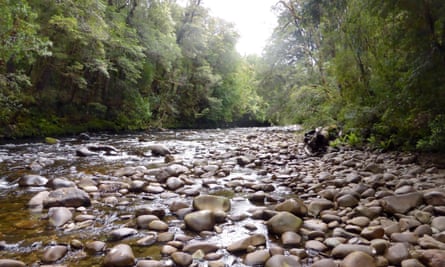
Saturday
10am: hot drinks and cake at the Patchwork cafe
The drive from Hobart into the heart of Tasmania is a pleasant one. Hobart is a compact place that fades from view rapidly as you leave it – traffic and houses are quickly replaced by rolling hills and winding roads.
Following the Derwent, it doesn’t take long before you’re in New Norfolk, a town featuring a gun shop on the main drag and an excellent stop-off point, the Patchwork café, that will ply you with hot drinks and homemade food.
We ploughed into a tasty carrot cake and a pot of tea while 1990s music played reassuringly in the background. You can dwell longer by looking over the selection of antiques on display, including the vintage cars out of the front of the café.
11.30am: a tipple and tour at the Redlands Estate (or perhaps Sullivans Cove instead)
Tasmania is famed for its cheese, wine and, increasingly, whisky. There are a number of distilleries dotted across the island, from Burnie down to Hobart, including the award-winning Sullivans Cove.
Eager to sample some of this malted goodness, we pulled into Redlands Estate, a distillery set in a handsome red brick granary building that was constructed in 1857.
The weathered feel of the place belies the newness of the operation. Whisky was first casked here in 2013 meaning that, due to the law that whisky must be aged for at least two years, Redlands is a distillery that has opened itself up to the public without offering any of the actual stuff it makes.
Instead, Redlands offers tours of the property (for a fee) and offers tastings of other beverages made in-house, such as apple schnapps. But it doesn’t hide the disappointment of the lack of whisky. One to visit in late 2015 onwards, perhaps.
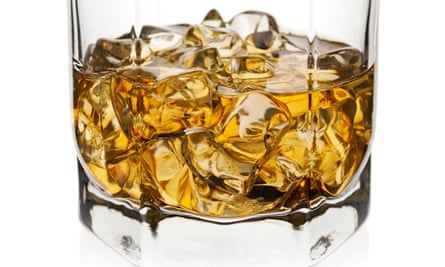
1pm: lunch at Jackson’s Emporium
We stop off at Jackson’s Emporium in the town of Hamilton for lunch – a place that features a giant, ornate piece of folding scenery from the Christmas window display of Myer in the 1970s. There is a good range of locally sourced meats and vegetables on offer, cooked by the family who run the place. Following lunch, the wilderness beckons. The vegetation starts to change in both size and colour, with tall trees and giant ferns becoming the norm.
Just a few hours after leaving Hobart, we’re closing in on Pumphouse Point.
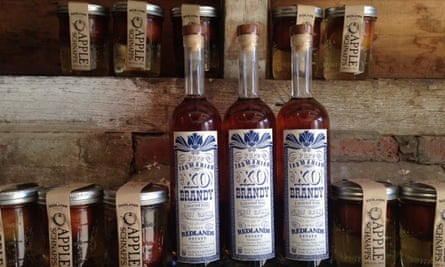
3.30pm: Pumphouse Point
Built in 1937, the pumphouse that sits on Lake St Clair was constructed to allay fears that Tasmania’s southern population may run out of water. A flume, now covered by a jetty walkway that leads to the building, was used, albeit rarely in its functional phase, to bring water from the lake.
The pumphouse was decommissioned in the 1980s, with developer Simon Currant subsequently going through a 20-year, stop-start process to transform the place into accommodation.

Currant finally prevailed and Pumphouse Point opened on 1 January this year. The prices for the 20 rooms range from $240 to $480 a night and the wind and rain can lash you even during the Tasmanian summer, but the pumphouse feels like a suitably plush refuge from the elements.
Each room contains a larder with locally produced wine, cheese and meats. You can mingle with others in lounge rooms overlooking the water – complete with wine supply, wood-fuelled fire and board games – and over dinner, where there is communal dining in the nearby lake house.
Some environmentalists aren’t keen on the precedent it sets, but it feels like a sensitive development in the world heritage area that may change a few perceptions of how arduous Tassie’s wilderness has to be for visitors. Plus, it’s an absolutely lovely place to stay.
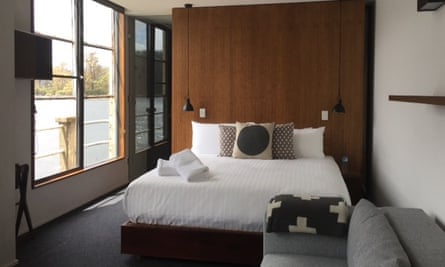
7pm: dinner at Pumphouse Point
There’s a set menu at Pumphouse Point, but the lack of variety is more than compensated by the quality. The two-course menu changes each night but the standard doesn’t appear to drop – fine Tasmanian hams and beef are on offer, as well as impressively flavourful vegetarian options. The brownies are a more than welcome treat if the weather has buffeted you on the walk to the dining rooms.
Sunday
9am: walk Lake St Clair
After getting the lie of the larder and spotting a gap in the angry-looking clouds, we attempt to interact with nature rather than just gawping at its beauty.
There are a number of walking tracks around Lake St Clair, many of which start from the visitor centre on the banks of the lake. This spot is the finishing point of the six-day overland trek, so expect to see lots of tired-looking hikers in sensible, brightly coloured clothing. The Walls of Jerusalem national park is to the north, while mount Ossa, Tasmania’s highest point, is nearby.
There’s the opportunity to take a ferry to spy some of the largely inaccessible mountains that sit next to the take, or you can go for a paddle yourself. Platypus dart through the waters on the northern side of the lake and you may spot one if you’re lucky.
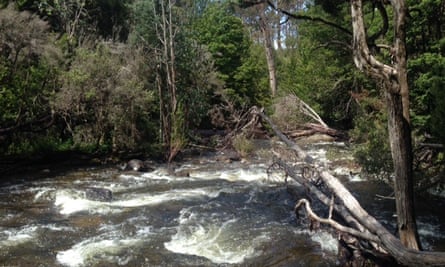
1pm: lunch at Derwent Bridge Wilderness Hotel
Nearby Derwent Bridge has a pub with an impressive menu - the highlight being an array of fine seafood - as well as the kind of abrupt service you sometimes get in country pubs. There’s a roaring fire to sit beside, where you can cradle one of the fine whiskies on offer.
3pm: visit the Wall in the Wilderness
The town also hosts the Wall in the Wilderness – a decade-long project by artist Greg Duncan to carve the history of central Tasmania into 100 huge wooden panels. Duncan has a mere six months to go, so it’s worth checking out his progress.
7pm: dinner and music at the lodge
Lake St Clair lodge is one of just two resorts in Tasmania’s world heritage area, perched on the banks of the lake.
As well as a range of accommodation, the resort offers dinner and, each week, live music of the guitar variety. A great place to unwind after a day in the elements.
Two days barely scratches the surface of Tasmania’s 1.58m hectare wilderness, but it can give you a good taster and it doesn’t necessarily have to involve canvas and campfires.
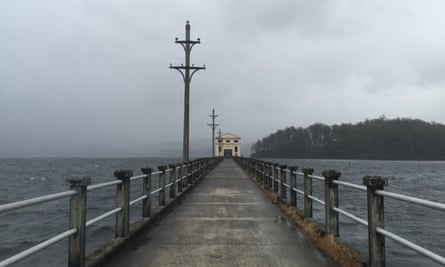
Places to stay:
Pumphouse Point road, Lake St Clair
0428 090 436
Lake St Clair Road, Lake St Clair
(03) 6289 1137
92 High Street, Oatlands
(03) 6254 1444
Oliver Milman travelled to Tasmania courtesy of Tourism Tasmania

Comments (…)
Sign in or create your Guardian account to join the discussion